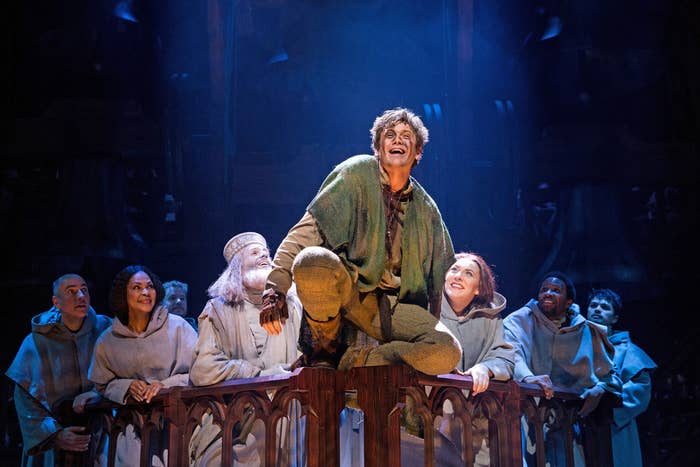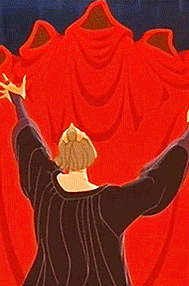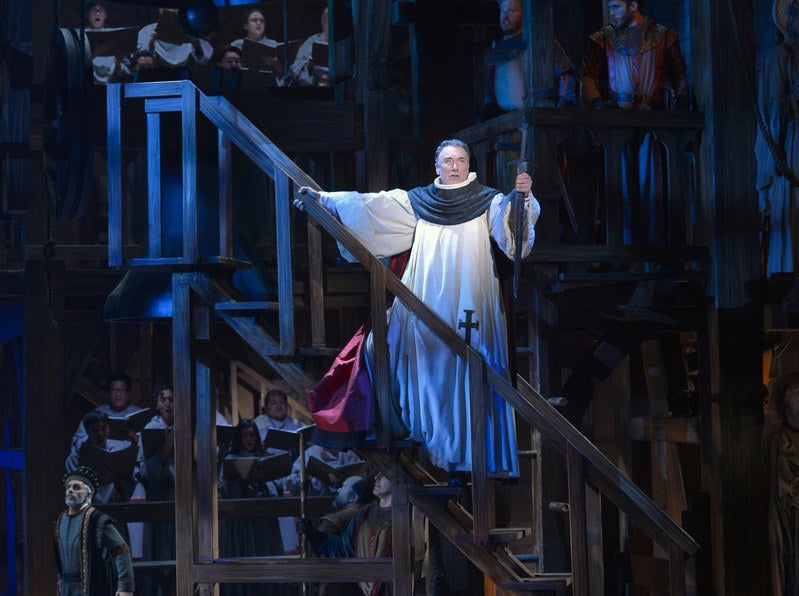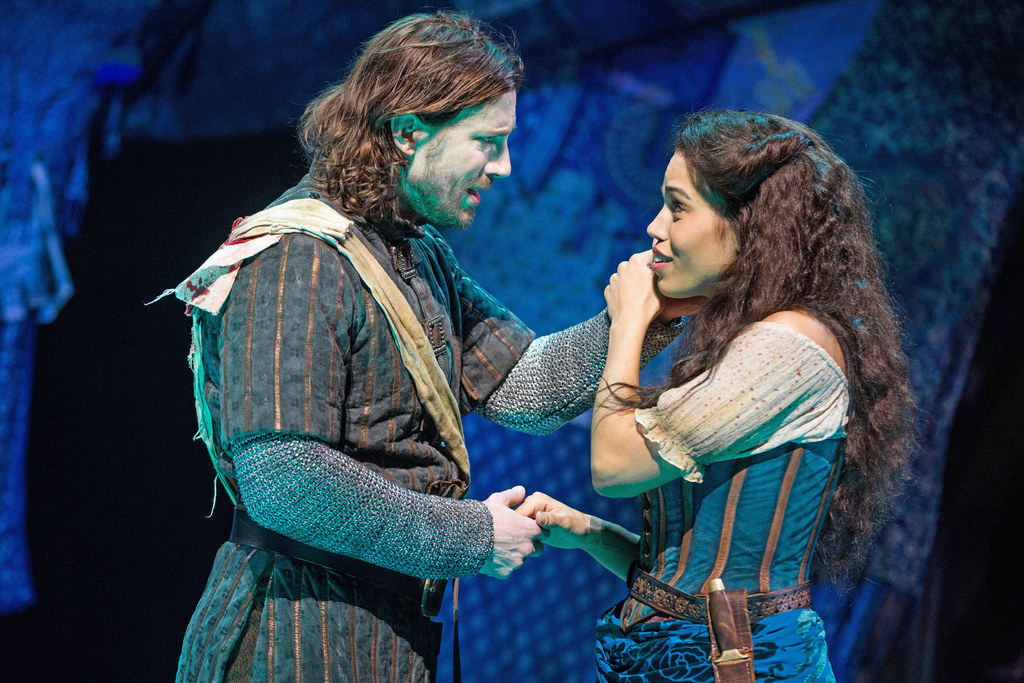
It'd be challenging to find a moment in a Disney animated movie as harrowing as the "Hellfire" sequence in The Hunchback of Notre Dame. The scene follows the morally conflicted Frollo as he tries to reconcile his lustful feelings for Esmeralda with his strong religious convictions. And as Alan Menken, who wrote the score to the movie, put it in an interview with BuzzFeed News, it's simply "one of the boldest, most amazing animated sequences ever."
Though the sexual subtext likely went over the heads of the countless children who've watched the film since its release in 1996, it's long been clear to the creative team behind the new Hunchback of Notre Dame musical, now playing at New Jersey's Paper Mill Playhouse after a successful run in La Jolla, California.
"The obsessions and passions that were in the Disney movie actually were quite startling to me," the musical's book writer Peter Parnell told BuzzFeed News. "I was really knocked out by it."
Menken — who wrote the score with lyricist Stephen Schwartz — Parnell, and the rest of the Hunchback musical team have leaned into the more adult themes in Victor Hugo's classic novel upon which both the animated movie and play are based. It's a slightly different version from the first theatrical adaptation of the Disney film, which ran in Berlin from 1999 to 2002: In the stateside production, for example, the comic relief gargoyles have been cut.
On the U.S. stage, Hunchback's darkness is more palpable than ever. If the Disney movie hinted at Frollo's inappropriate urges for the gypsy Esmeralda, the musical dives into his predatory desire, with the judge explicitly offering to spare her life if she'll sleep with him. Disney, this is not.
"What we felt from the very beginning that we wanted to do is really make this stage adaptation for an adult audience, and really commit to the tone and the complexity and the darkness of Hugo's novel," director Scott Schwartz, son of Stephen, told BuzzFeed News.
And though Schwartz's musical is not being billed as "Disney's Hunchback," it is being produced with the full support of the Disney Theatrical Group, which has been responsible for hits like Aladdin, The Lion King, and Newsies. To their credit, instead of asking the show's creative team to pull back on the adult content, Disney Theatrical has allowed for a much more complex interpretation of the source material, culminating in a show that's more Les Mis than Little Mermaid.


While Hunchback's U.S. stage incarnation may still sound familiar to young audiences who got what they came for with the aforementioned Disney Theatrical Group productions, the musical's creative team took "the wonderful score that was begun in the Disney animated feature and combine[d] that really with the tone and the quality of Victor Hugo's novel," Schwartz said.
The film's score, he added, was already "one of the most theatrical scores ever from a Disney animated feature." But, as with most of the Disney films that Menken has worked on — including The Little Mermaid, Aladdin, and, with Stephen Schwartz, Pocahontas — there were songs produced that did not end up in the movie. And with the Hunchback musical, Menken and Stephen Schwartz had the opportunity to repurpose some songs and rewrite others to accommodate the darker tone.
"Once a song is done and it's out there, the world will do as they will," Menken said. "Those songs are never lost. 'In a Place of Miracles' was originally in the movie, sung by Kevin Kline as Phoebus. It doesn't remain in the movie but it certainly comes to life in the show."
And while Menken speaks highly of the Disney film, it's clear there was a struggle to make the movie appropriate for children without diluting the Victor Hugo story entirely. "It's the context we always intended," Menken said of the musical's "Hellfire" sequence. "Here's a man who's both sensually obsessed and also spiritually repulsed at the same time, and fearing his own damnation while he just obsesses over this beautiful gypsy woman. It is thrilling."

In addition to sounding different, Hunchback on stage also looks like a very different production. Parnell collaborated with Scott Schwartz, Menken, and Stephen Schwartz to create something that was visually fresh and a more intimate approach than the operatic German production.
The set for the Hunchback musical — which centers primarily on Quasimodo (Michael Arden), Frollo (Patrick Page), Esmeralda (Ciara Renée), and Phoebus (Andrew Samonsky) — is minimalist. Audiences can only see the rough outline of the titular cathedral, with practical effects that could have been used in the fifteenth century, when the story takes place.
"In order to emphasize the humanity of the story and the truth of these people — that they're really full, complicated people — we wanted a production that stripped away any kind of artifice and really put the focus on the actors and the text and the music, and let the audience draw their own conclusions," Schwartz said. "We wanted to give the audience an experience when they're watching the show of seeing the full theatrical presentation, but also maybe it feels a little bit like reading the novel — we're asking the audience to use their imagination to picture this story."
Perhaps the biggest difference between Disney's Hunchback movie and the stage production, however, is the musical's culmination. "The ending is darker than the Disney movie," Parnell noted. "The worldview and the whole canvas can't be as large as Victor Hugo's, but I think we get closer to that darkness. There's nothing in terms of our storytelling that we changed by saying, 'Oh, is this too dark? Or can we go darker?' And we've taken it, I think, I hope, as far as we can."
